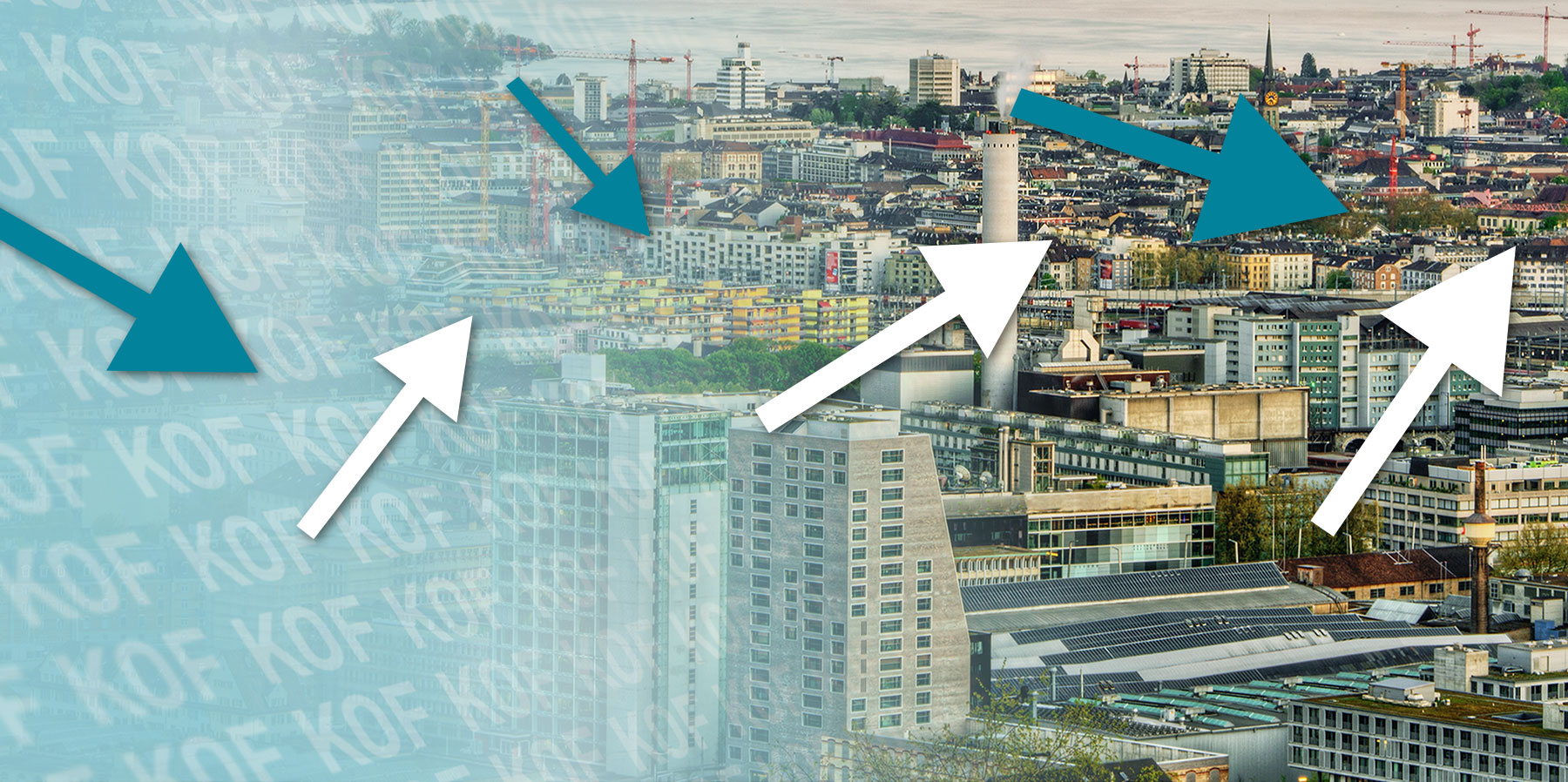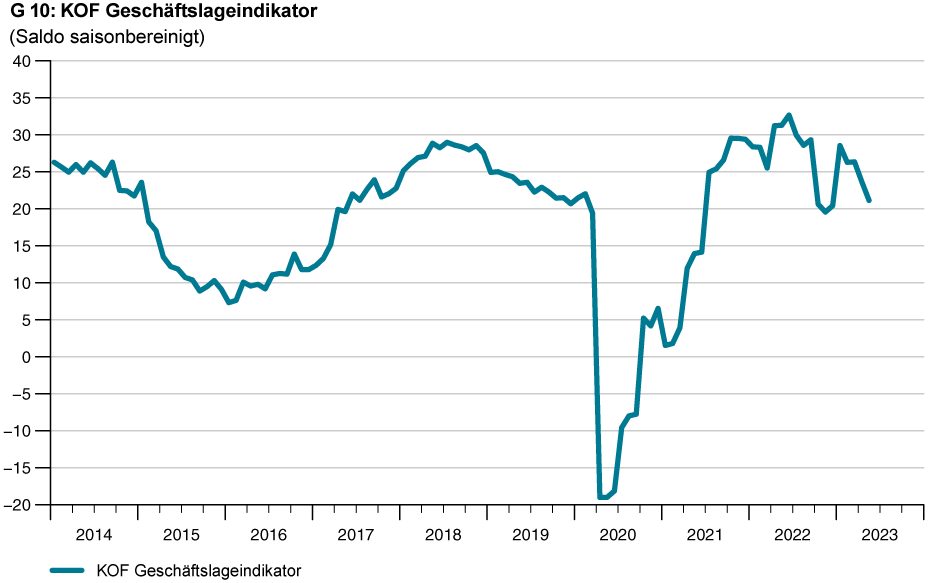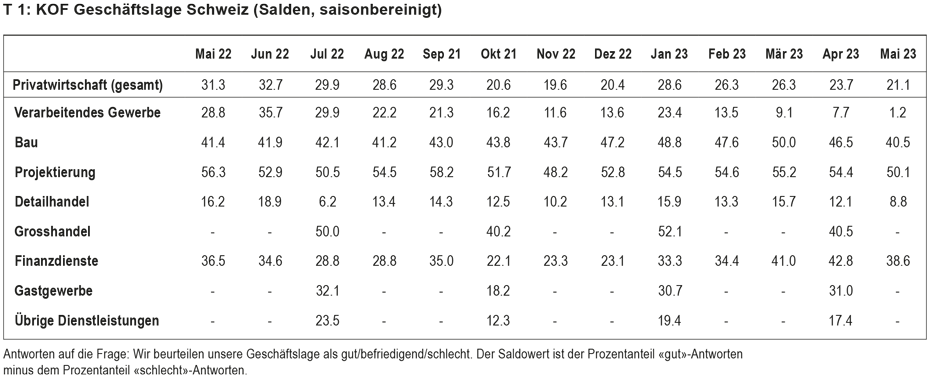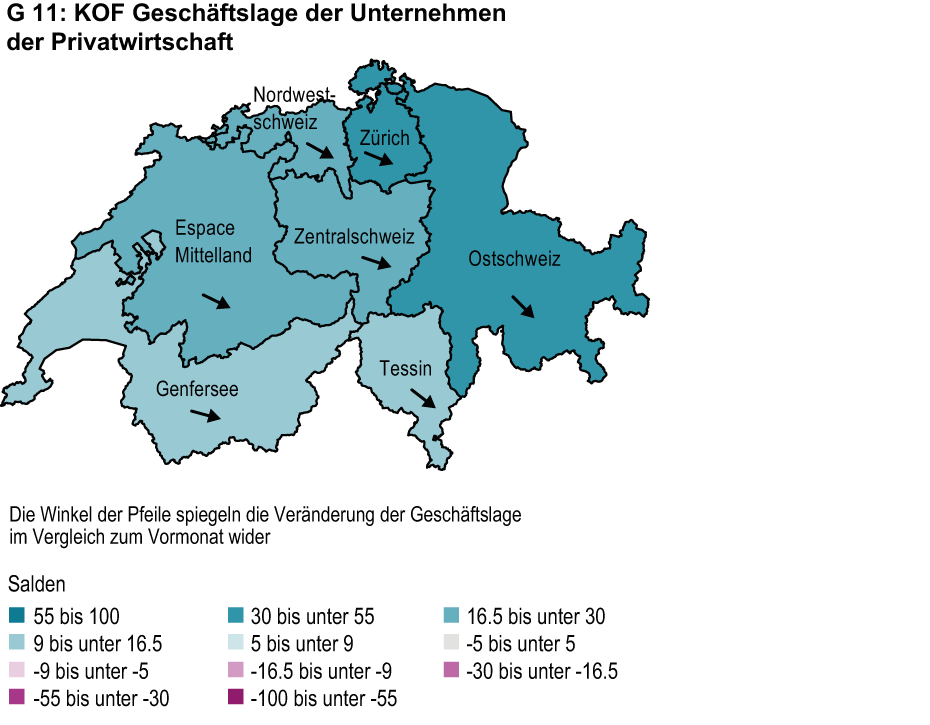
Business situation deteriorating
The KOF Business Situation Indicator fell across the board in May. This means that the business situation is worsening for the second month in a row, and it is significantly less encouraging than it was in May last year (see chart G 10). Economic activity in Switzerland is currently sluggish.
The performance of the manufacturing sector is a cause for concern, with business activity here plummeting. Business in this sector deteriorated considerably compared with last year. The decline in the electrical engineering, precision mechanics and optics sectors, which reported an excellent business situation in 2022, was particularly steep year on year. The Business Situation Indicator for the chemicals, pharmaceuticals and plastics industries fell almost as sharply. By contrast, only the food, beverages & tobacco sector and the textiles & clothing industry reported a similar business situation to last year. The recovery in the building-related sectors of project engineering and construction has come to an end for the time being. Although earnings in the construction industry are performing well, the order situation is no longer viewed as optimistically as it was at the beginning of 2023. Demand expectations are slightly more subdued than they were before. The Business Situation Indicator for the retail trade fell for the second month in a row. Although customer footfall has been disappointing recently, retailers are increasingly expecting sales to rise in the near future. Business activity in the financial and insurance services sector declined after having improved substantially in recent months (see T 1).
The KOF Business Situation Indicator fell across the board from a regional perspective. The business situation deteriorated in all major Federal Statistical Office (FSO) regions in May: in the Lake Geneva region, Eastern Switzerland, Espace Mittelland, the Zurich region, Ticino, Northwestern Switzerland and Central Switzerland (see chart G 11).
The KOF Business Situation Indicator highlights companies’ current business situation. The KOF Economic Barometer, on the other hand, is an indicator of the economic outlook. The Business Cycle Clock shows that 2022 saw a continuation of the recovery from the pandemic in the first few months of the year (see chart G 12). From the summer onwards, however, the economy slowed noticeably. Although the economy stabilised temporarily at the beginning of 2023, it is now faltering again.
Explanation:
Chart G 10 shows the KOF Business Situation Indicator across all sectors included in the survey. The business situation of sectors that are only surveyed quarterly is kept constant in the interim months.
Chart G 112 shows the business situation in the main regions defined by the Swiss Federal Statistical Office. The regions are coloured differently to reflect their business situation. The arrows within the regions indicate the change in the situation compared with the previous month. An upward-pointing arrow indicates that the situation has improved compared with the previous month.
The Business Situation Indicator in the KOF Business Cycle Clock (chart G 312) is plotted against the KOF Economic Barometer. The indicator reflects the current business situation, while the barometer is a leading indicator of changes in activity. The clock can be divided into quadrants. During the recovery phase the business situation is below average but growth prospects are above average. At the peak of the economic cycle the situation and prospects are both above average. During the slowdown phase the situation is above average and prospects are below average. At the bottom of the economic cycle the situation and outlook are both below average. Ideally the chart runs through the quadrants in a clockwise direction.
The KOF Business Situation Indicator is based on more than 4,500 reports from firms in Switzerland. Companies in industry, the retail sector, construction, project engineering and financial services and insurance are surveyed monthly. Businesses in the hospitality, wholesale and other services sectors are surveyed during the first month of each quarter. These firms are asked, among other things, to assess their current business situation. They can rate their situation as either 'good', 'satisfactory' or 'poor'. The net balance of their current business situation is the difference between the percentages of 'good' and 'poor' responses.
Mehr Informationen zu den KOF Konjunkturumfragen finden Sie auf unserer Webseite: https://kof.ethz.ch/umfragen/konjunkturumfragen.html
Contact
KOF Konjunkturforschungsstelle
Leonhardstrasse 21
8092
Zürich
Switzerland




